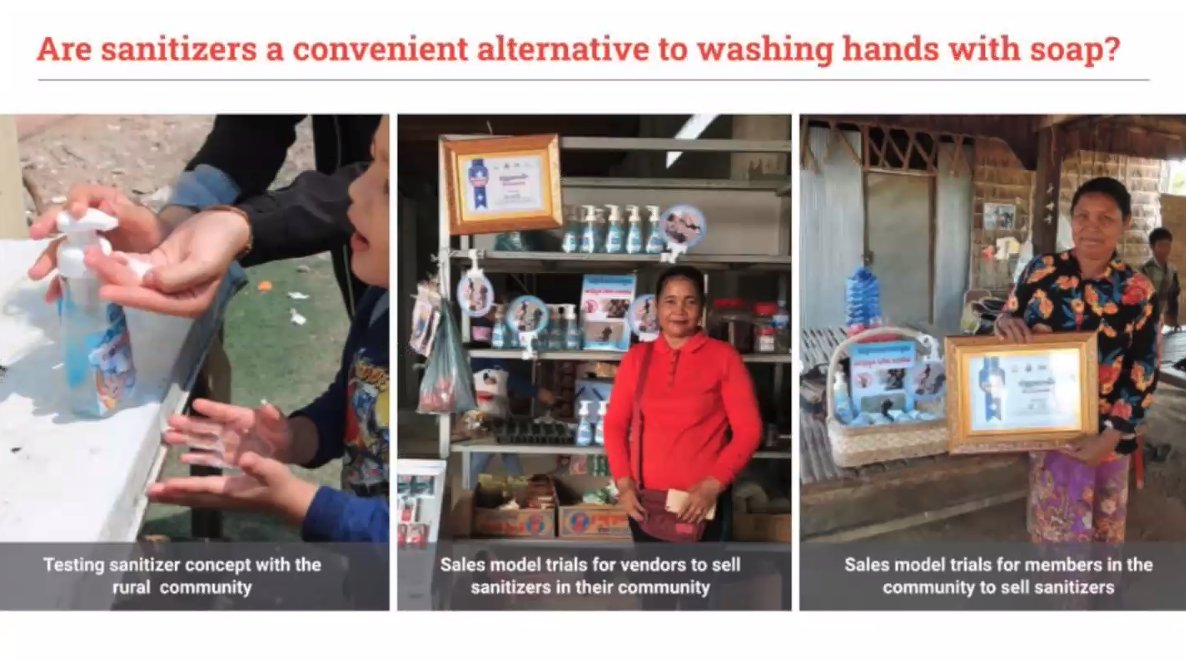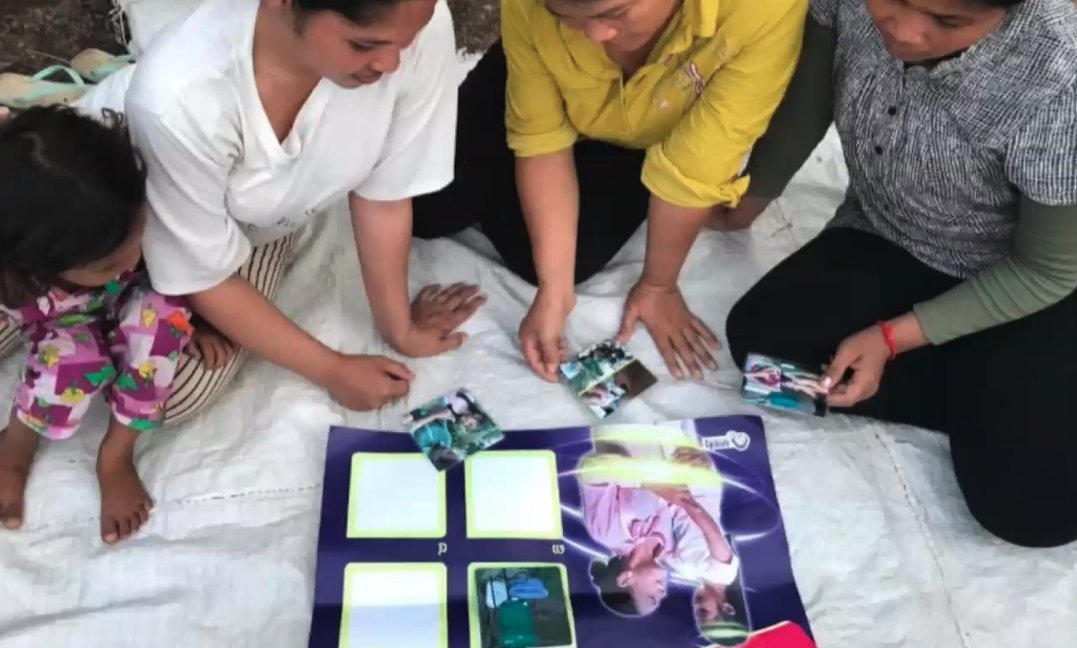
Our next presenter is Saher Zafar, Senior Design Strategist at The iDE Cambodia Innovation Lab
— Designing a National Behaviour Change Campaign for Rural Cambodia
#dr2021
— Designing a National Behaviour Change Campaign for Rural Cambodia
#dr2021
A huge part of design research is emersing yourself in the context and understand people's challenges and needs.
The campaign created characters — a helpful grandmother and child super heros to show kids how to use the toilet, wash their hands, and design the solutions with the community.
The campaign concept was co-created with the community, stakehodlers and prototyped over 6 rounds — it included content, reading material, physical materials.
It helped design solutions closes to peoples needs.
It helped design solutions closes to peoples needs.
They started with 20 different prototypes used to test a broad range of ideas and perceptions.
They used dances, songs and actions to encourage kids to change their sanitation behaviours. The prototype was the super hero kids using the behaviours they wanted to encourage
They designed probes to discover negative emotion triggers to understand fear, disgust.
The prototype was a 4 page pitch deck accompanied with a physical prototype.
They used vendors to test if they could be a source of behavioural interventions.
The designs were iterated in the field as they learn with paper prototypes

They used vendors to test if they could be a source of behavioural interventions.
The designs were iterated in the field as they learn with paper prototypes


Behaviour change is a process and needs to go beyond awareness.
In order to have most impact it's not just about communicating the behaviours you have to support and model those behaviours.
It's dependant on a larger context, they won't change if you don't address it.
In order to have most impact it's not just about communicating the behaviours you have to support and model those behaviours.
It's dependant on a larger context, they won't change if you don't address it.
Define the problem, people, practices, and have a clear goal in mind.
You can get lost in a complex problem.
You can get lost in a complex problem.
Be willing to test and iterate, even "good" ideas can fail.
Be open to things constantly changing and evolving.
Test early and often.
Be open to things constantly changing and evolving.
Test early and often.
Constantly engage with all stakeholders and consider ALL the agenda and needs along the way.
Create a united approach to sanitation as opposed to the fractured approaches of the past
Create a united approach to sanitation as opposed to the fractured approaches of the past
Be strategic. Make decisions. Prioritise.
This will help you to know what feedback is necessary and when to move forward.
This will help you to know what feedback is necessary and when to move forward.
Behaviour change is hard, and it takes time.
If we understand people, make informed nudges and create an enabling environment we can make big changes.
If we understand people, make informed nudges and create an enabling environment we can make big changes.
@threadreaderapp unroll please
• • •
Missing some Tweet in this thread? You can try to
force a refresh








